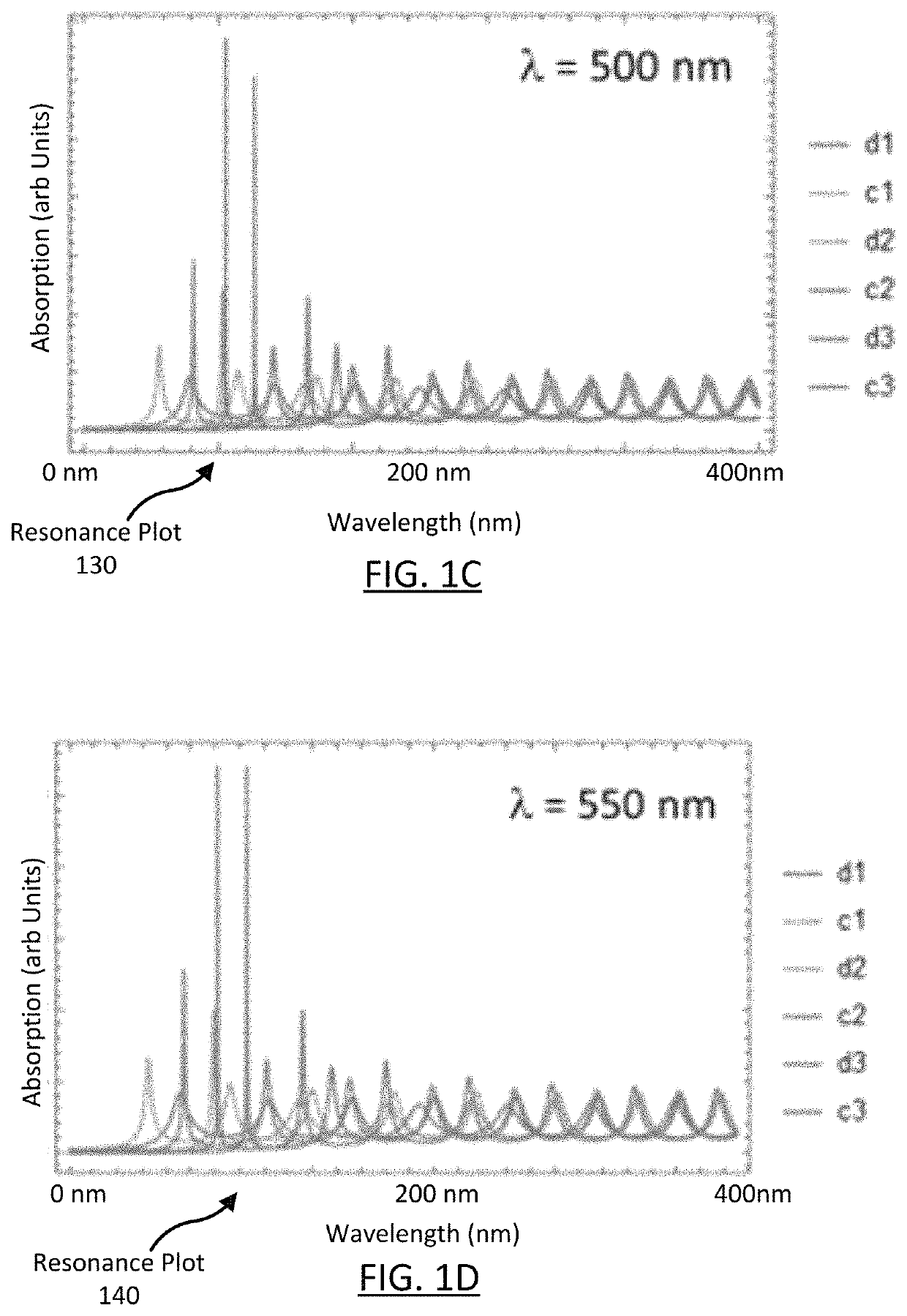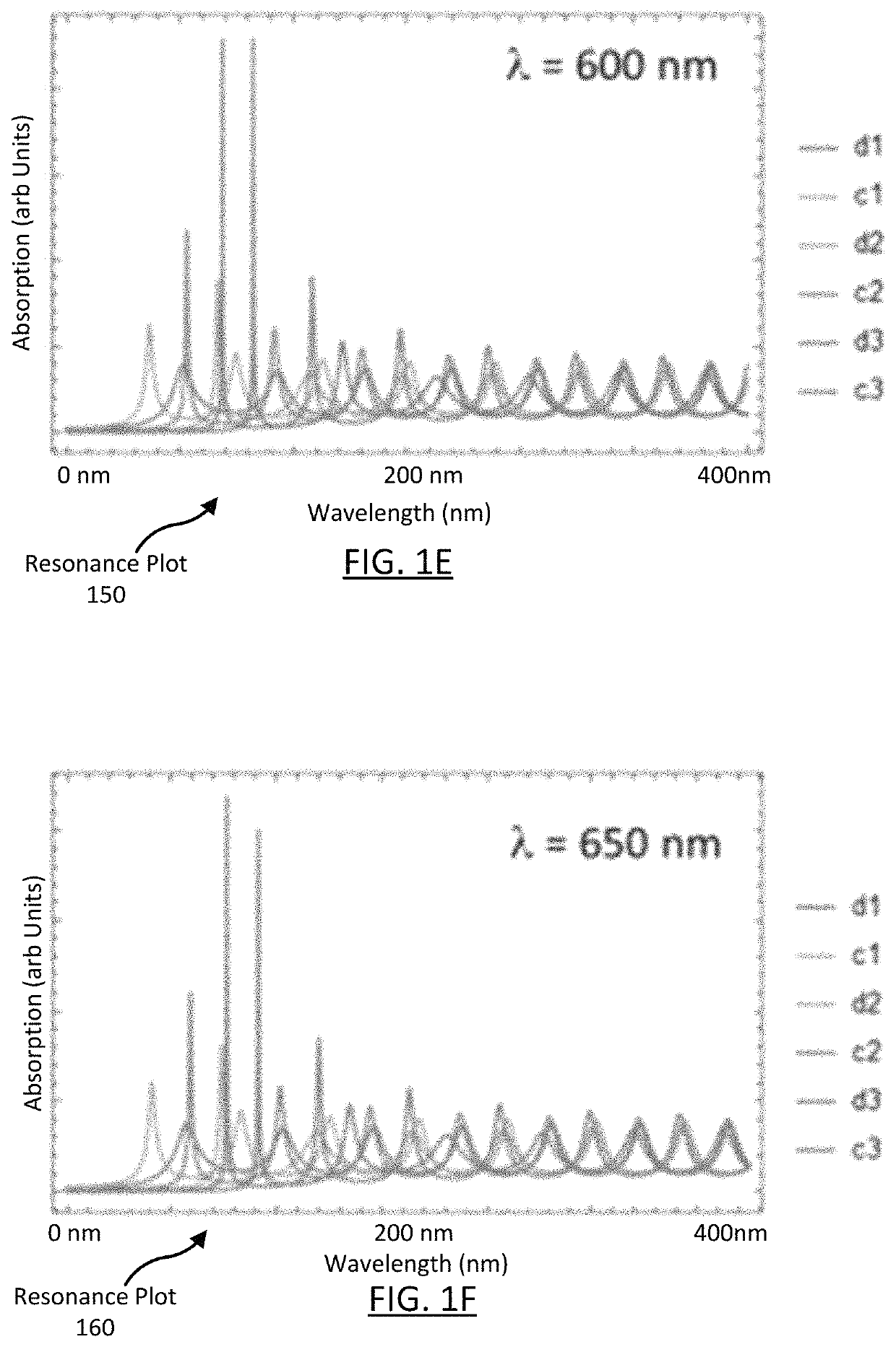High information content imaging using Mie photo sensors
a technology of photo sensors and high information content, applied in the field of photosensitive devices, can solve the problems of signal-to-noise ratio, dynamic range, depth of field, depth of focus, etc., and achieve the effect of reducing the number of sensors, and improving the quality of images
- Summary
- Abstract
- Description
- Claims
- Application Information
AI Technical Summary
Benefits of technology
Problems solved by technology
Method used
Image
Examples
Embodiment Construction
I. Introduction
[0030]Photo sensor arrays are composed of a surface including a number of pixels where each pixel may comprise a photo sensor and signal collection electronics that are, generally, approximately co-located with each photo sensor. Each pixel operates by detecting photons at particular wavelengths and then generating an electrical charge, voltage, or resistance that is related to the number of photons detected at each pixel. This charge, voltage, or resistance is then measured, digitized, and used to construct an image of the object, scene, or phenomenon that emitted or reflected the photons. Photo sensors can also be deployed for imaging as single detector or as an array of detectors.
[0031]Future photo sensor technology adoption may be fueled by, for example, three primary ideas: i) image quality (e.g., resolution, low light performance, multispectral imaging, etc.), ii) pixel size in three-dimensions, and, 3) device functionality (e.g., high-speed video, image analysi...
PUM
| Property | Measurement | Unit |
|---|---|---|
| height | aaaaa | aaaaa |
| height | aaaaa | aaaaa |
| feature size | aaaaa | aaaaa |
Abstract
Description
Claims
Application Information
 Login to View More
Login to View More - R&D
- Intellectual Property
- Life Sciences
- Materials
- Tech Scout
- Unparalleled Data Quality
- Higher Quality Content
- 60% Fewer Hallucinations
Browse by: Latest US Patents, China's latest patents, Technical Efficacy Thesaurus, Application Domain, Technology Topic, Popular Technical Reports.
© 2025 PatSnap. All rights reserved.Legal|Privacy policy|Modern Slavery Act Transparency Statement|Sitemap|About US| Contact US: help@patsnap.com



